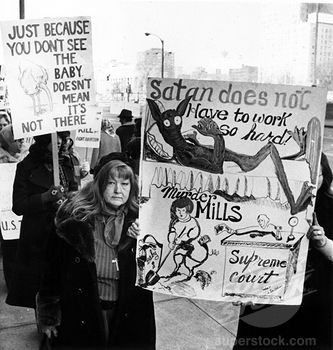Revivalism and the Religious Right
The Birth of the Religious Right
In 1957, a year often considered the apex of the postwar religious renewal, 69 percent of Americans believed that religion was increasing its influence on American life. Five years later, only 45 percent believed that religion was still expanding in influence. This percentage continued to fall, reaching a low of 33 percent by 1965 -- a 36 percent decrease in less than a decade.
The 1960s and 1970s were characterized by a religious rejuvenation and reemergence of evangelicalism as a social, political, and cultural force. Most scholars locate the origins of the religious right during this time period. The chief catalysts for evangelical politics was a series of developments that were perceived as threats to the family, such as the sexual revolution, feminism, and increasing abortion rights. Closely related were national debates that changed the character of public schools, at least in the minds of the religious right, such as busing students to achieve racial integration and banning prayer and Bible reading in public schools.
